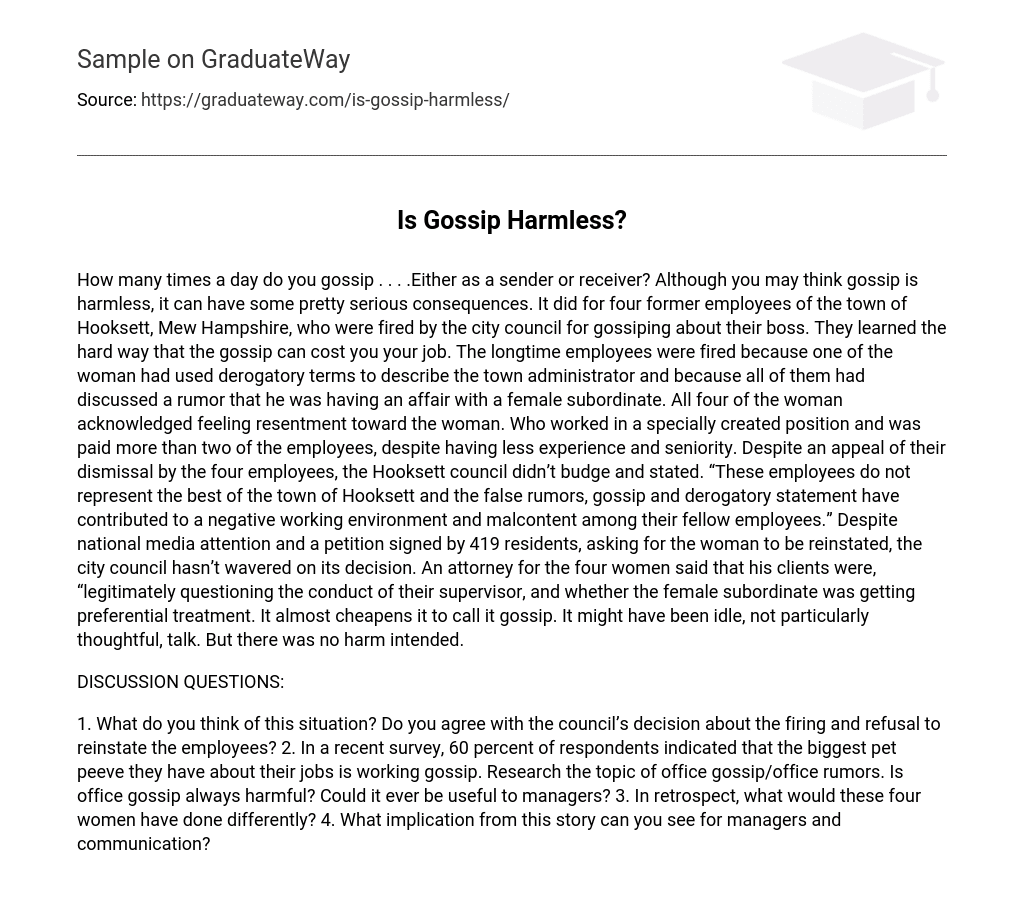How many times a day do you gossip . . . .Either as a sender or receiver? Although you may think gossip is harmless, it can have some pretty serious consequences. It did for four former employees of the town of Hooksett, Mew Hampshire, who were fired by the city council for gossiping about their boss. They learned the hard way that the gossip can cost you your job. The longtime employees were fired because one of the woman had used derogatory terms to describe the town administrator and because all of them had discussed a rumor that he was having an affair with a female subordinate. All four of the woman acknowledged feeling resentment toward the woman. Who worked in a specially created position and was paid more than two of the employees, despite having less experience and seniority. Despite an appeal of their dismissal by the four employees, the Hooksett council didn’t budge and stated. “These employees do not represent the best of the town of Hooksett and the false rumors, gossip and derogatory statement have contributed to a negative working environment and malcontent among their fellow employees.” Despite national media attention and a petition signed by 419 residents, asking for the woman to be reinstated, the city council hasn’t wavered on its decision. An attorney for the four women said that his clients were, “legitimately questioning the conduct of their supervisor, and whether the female subordinate was getting preferential treatment. It almost cheapens it to call it gossip. It might have been idle, not particularly thoughtful, talk. But there was no harm intended.
DISCUSSION QUESTIONS:
1. What do you think of this situation? Do you agree with the council’s decision about the firing and refusal to reinstate the employees? 2. In a recent survey, 60 percent of respondents indicated that the biggest pet peeve they have about their jobs is working gossip. Research the topic of office gossip/office rumors. Is office gossip always harmful? Could it ever be useful to managers? 3. In retrospect, what would these four women have done differently? 4. What implication from this story can you see for managers and communication?





